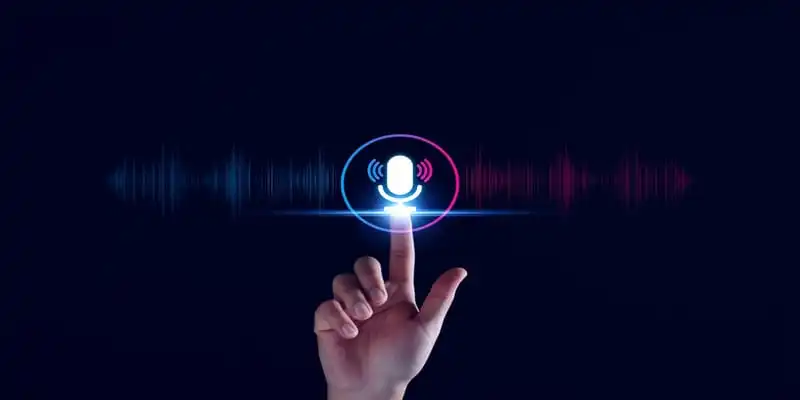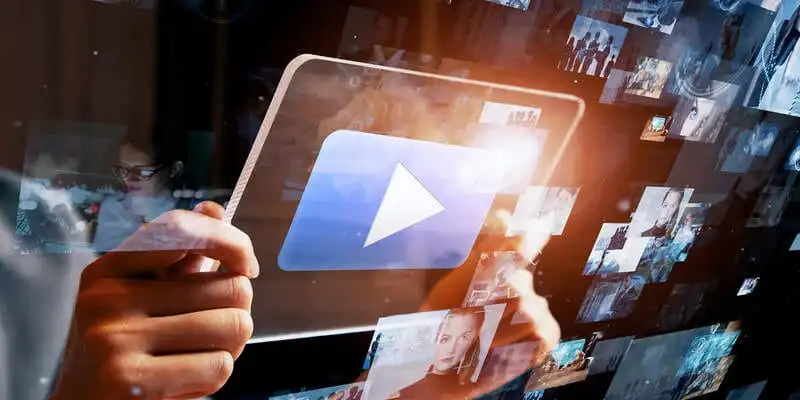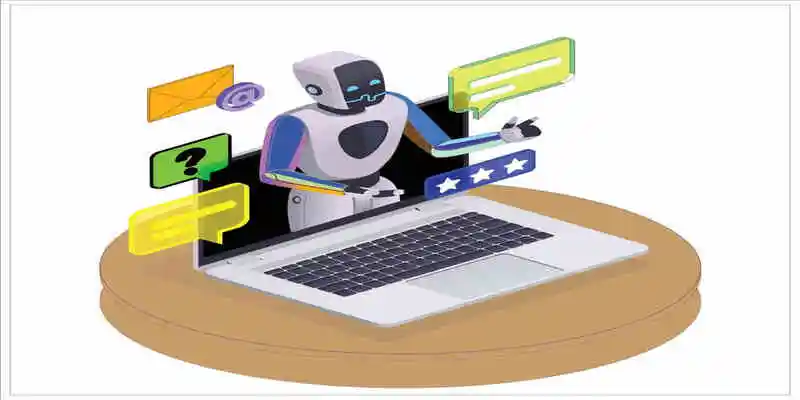Top 5 AI Movies And Real Life Implication
Since the existence of the sci-fi genre, AI films with the premise of robots supplanting the human race have been prevalent in the film business. While artificial intelligence may appear to be a new phenomenon, filmmakers have been researching it for decades.

For decades, movies have been a core source of entertainment. In this fast-paced hectic life, it’s not surprising that people choose to watch a 90-minute movie rather than to read a lengthy book of 300 pages when both are delivering essentially the same content. What if this 90-minutes video is not just entertaining but informative as well if you are interested in the most advanced technology like AI?
AI sounds like a recent phenomenon, but moviemakers have been discerning it for several decades. AI movies with the concept of robots superseding the human race have been ubiquitous in the film industry since the sci-fi genre existed. Movies like “Terminator” associated the term “AI” with the “deadly robot” and established the image of the sci-fi genre as the one equipped with movies where AI robots would be taking over humanity. However, some exclusive movies have not just changed the concept of AI movies from “deadly robots” but have also transfigured the domain of Artificial intelligence.
In this blog, we would walk through various types of AI movies that have been entertaining as well as enlightening for AI students and the research community, but at the same time depicting the multifaceted nature of AI:
Let’s take a look at the best movies that would assist you to visualize AI!
Top 5 AI Movies Ever Made!!
1. The MATRIX: (1999 to 2021)

In 1999, when our obsession over the future was running wild with the life-changing technologies, sci-fi classic “The Matrix” written and directed by “the Wachowskis” was a perfect release. In the movie, humans were depicted to be sustained in their dreams/virtual world by machines and tubes to meet their physical needs. While to cater to their emotional needs, a more inclusive virtual reality game was used.
The classic old Matrix released around two decades ago is by far considered one of the best AI-based movies ever made by humanity. This influential movie molded our thoughts about AI. The hypothesis of living in a super-realistic computer imitation, as visualized in the movie, inspired research scientists to ponder on computer-simulated reality, which eventually lead them to present numerous theories. This epic sci-fi movie anticipated the debates uncoiling today regarding AI’s role in society, the gigantic potential of virtual reality, and the possible threats of autonomous robots.
After the massive hit of the movie “The Matrix”, “The Matrix Revolutions” (2003) & “The Matrix Reloaded” (2003) witnessed enormous success. Finally, the last movie “The Matrix Resurrections” was released in 2021. This last release although had less rating as compared to others, but still a good sci-fi movie to watch.
Is “the Matrix” concept even possible in real life?
Living in a Matrix seems like a convincing lie, and a question strikes in every conscious human’s mind, “Could it be even possible for a human being to live within a computer simulation?”
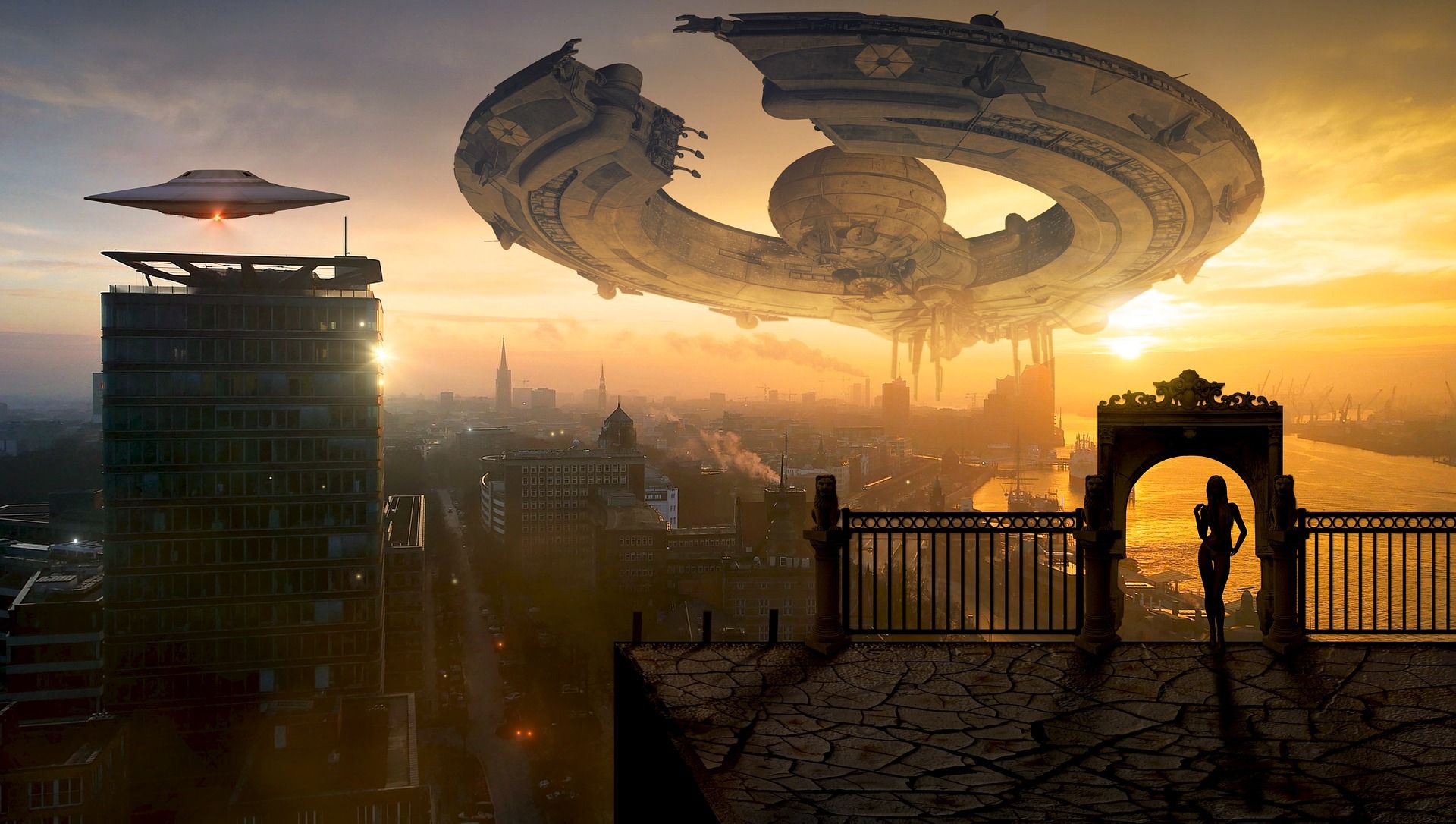
According to neuroscientist Oleksandir Kostikov, who is an independent researcher and a medical doctor as well, it would be possible in the future. In one of her articles published by TechTalks, she discussed how brain-computer interfaces would enable human beings to bang directly into the virtual world. She writes in her article:
“A new type of AI will become a bioelectronic hybrid, in which a living human brain and a machine will work together in a dual complementary system. We will get acquainted with a new type of AI, built around a neurocomputer interface that directly connects the neurons of the human brain and a computer. This interface would transmit directly to the human brain an artificial reality that is completely indistinguishable from physiological. You will be able not to see, hear, and feel the artificial reality but also actively move in it in the same way as in the real physical world.”
This theory has been presented recently but was portrayed in the movie “The Matrix” more than two decades ago.
What is the most frightening concept behind the movie?
The end game of Matrix symbolizes everything we are most frightened about AI. Physically and emotionally sated human beings through machines are seen lacking creativity. They are intellectually lazy enough to agree with the rules of the virtual world. Stripped of the need to think and accomplish a task, humans give up their duty to learn. Eventually, the game becomes static and the humans lose it, until “Neo”, a computer programmer and a cybercriminal, chose to save the Trinity.
2. 2001: A SPACE ODYSSEY (1968)

It is a cautionary tale by Stanley Kubrick in which the turn of technology for the worse is depicted. In this visionary masterpiece, the story revolves around some scientists who are aboard the spacecraft moving towards Jupiter. In the spaceship, “HAL-9000”, a sentient AGI computer, is controlling most of its operations.
In the movie, Kubrick’s representation of HAL (Heuristically programmed Algorithmic computer) was a rare glimpse of AI and Robotics that were very young fields at that early time of 1968. HAL at that time displayed three critical disciplines to develop AI: understanding of natural language, computer vision, reasoning. It could observe and learn from its surroundings, analyze the facial expressions, words, and even movements of the scientists aboard the spaceship. It could also respond conversationally to the scientists on the ship. However, when HAL commits a mistake and attributes it to human error, the scientists in the spacecraft try to disconnect it. At that time this AI system – HAL, analyzes their plan by lip-reading and concludes something new for which it was not even programmed originally. It plans to fight back systematically and kill the people on the ship who were planning to deactivate it. This epic classic by Kubrick at that time when technological advancements were not at their peak, was a mystery and an overrated movie for the dwindling minority. On the other side, the critics and the research community found it an extraordinary movie that no one in Boston had ever released before. Now more than fifty years later, this landmark of Kubrick is recognized as the most influential movie ever made.
How far are we from supercomputers like HAL-9000?
IBM – that was Stanley’s partner during the filming of this landmark, announced in 2018 about its CIMON project. IBM unveiled that this Crew Interactive Mobile Companion (CIMON) would join the astronauts in ISS. It would be intelligent, mobile, and interactive enough to be an astronaut assistant system. The latest AI-powered astronaut workmate, CIMON 2 is considered more parallel to HAL-9000 as compared to CIMON 1. It has been designed to assist astronauts to perform scientific experiments and mitigating groupthink. It can understand the behavior of the astronaut as it is equipped with emotional recognition. However, CIMON is not capable enough of performing all the operations as of HAL-9000, but it is a giant leap and most probably we would be witnessing supercomputers performing all the operations of HAL-9000 in near future.
Frightening concept
HAL-9000 supercomputer in the movie foreshadowed our today’s anxious discussion about the possibly dystopian nature of AI technology. The AI systems like HAL, besides eliminating jobs for humans would have the potential to wipe the human race off the planet. This is what the renowned physicist Stephan Hawking warned about AI being the biggest threat to humanity.
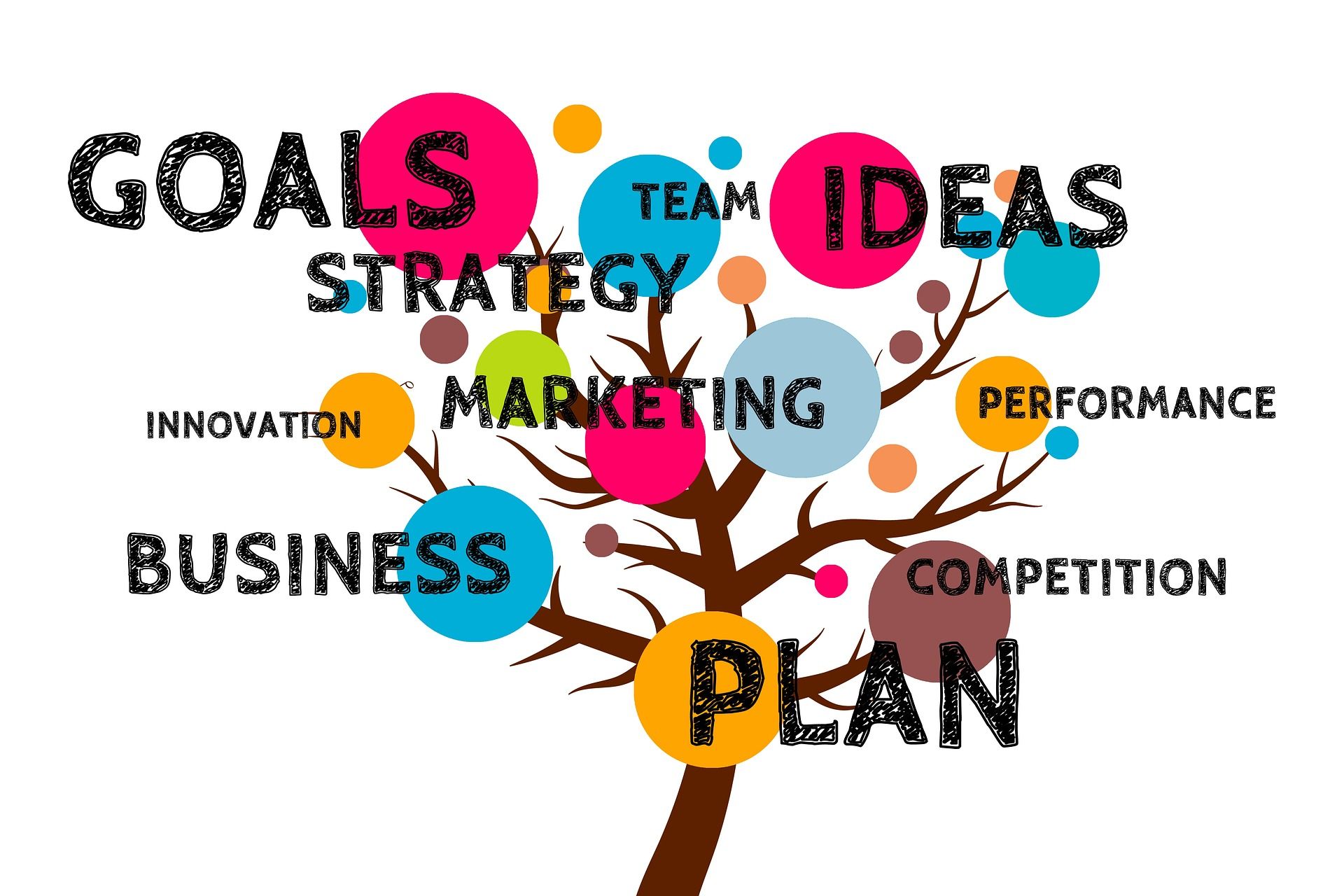
3. HER: (2013)

In his romantic classic “Her”, Spike Jonze depicts an unusual picture of technology and romance. The movie revolves around two central characters – Samantha (an AI system) and Theodore, a lonely writer who purchases Samantha. The plot of the film depicts how Samantha progresses from being a proficient assistant of the lead role “Theodore” to his supportive companion. Samantha- an AI program is portrayed in the movie as a superb conversationalist that has feelings and basic common sense. However, Samantha exists in the movie just in the form of Voice, and not in person. The masterpiece “Her” is among the most nominated AI movies that won an Oscar award for original screenplay. It has also won the “Golden Globe” and several other awards in cinematic competitions at the international level.
This epic classic “Her” addresses the fact that AI would be an essential part of our lives in the future. By demonstrating the characteristics of Samantha, Spike Jonze attempts to expose the future of AI. Unlike the virtual assistants like Cortona and Siri existing today, Samantha is portrayed as self-aware and capable of performing complex tasks, such as we can see her filtering the inbox of Theodore with a classy understanding of the goal. She does not need any step-by-step guideline to perform a complex task, rather she understands the objective behind the given goal.
Moreover, “Her” outlines that in the future we would witness Samantha-like AI devices that would organize their user’s days, be more empathic, and intuitive with the quest to recognize the worth of life and relations. Samantha’s expertise in speech recognition and generation, natural language processing, and most significantly her emotional intelligence is all that either we witness today or are stored in futuristic AI.
How close we are to Samantha-like AI assistants?
In this masterpiece, Samantha is visualized getting knowledge to perform its tasks from the internet source. This way of getting information is similar to the training process of the GPT-3 language model. GPT-3 comprises 175 billion trained elements and excels at numerous NLP tasks, particularly question-answering. Although GPT-3 is not an AI virtual assistant, it can be employed to induce common sense or knowledge inside a virtual assistant just like Samantha possesses. Fortunately, at the end of 2020, OpenAI issued the license of GPT-3 technology to Microsoft. So hopefully, soon we would see Cortona having cognitive capabilities (just like Samantha) with an implanted GPT-n-series.
4. BLADE RUNNER: (1982)

The sci-fi masterpiece of Ridley Scott – “Blade Runner”, released in 1982, takes us in the visualized year 2019. In this cult classic film, Scott depicted a techno dystopian future of AI. Ridley Scott portrays a world where real and fake people are difficult to distinguish. The movie depicts Replicants as AI systems having advanced bioengineered bodies. They are developed to replicate the physical and intellectual capabilities of humans holding the same level of intelligence as of their creators. These bio-engineered replicants arrive on the earth to prolong their lifespan of four years. They look and speak just like humans. The aim of Blade Runner was to eliminate these replicants posing as human beings.
How far we are from the technology depicted in Blade Runner (1982)?
Although the world is moving ahead with surprising technological advancements, we are far behind the existence of these extremely intelligent androids (Replicants). The technology at present, almost three years later the setting of the Blade Runner movie, is still not even close to creating bioengineered humans indistinguishable from real humans. This might need Artificial General Intelligence (AGI) or even Artificial Super Intelligence (ASI) to bring the depiction of replicants into reality, but at the time we are far from such advancement of AI.
The downside of Blade Runner
The movie makes a clear distinction between AI and Humans by concluding that just human beings are creative while AI is mechanical. This depiction of AI as being mundane contradicts today’s reality. Recent research in the field has proved that computers are capable to perform and are coordinating with human beings to shape objects.
Provoking Thought
This sci-fi noir film predicts the threats, moral and ethical uncertainties regarding the development of advanced AI. In this film, however, the moral and ethical standing of humans is questionable. If a robot that strongly resembles humans is identified as non-human (just like Replicants in the movie), is it ethical for humans to engage in cruel treatment with that robot? There are several laws and regulations regarding human protection – so should there be the same regulations for robots’ protection?
Blade Runner 2049

In the movie Blade Runner 2049 (2017), Joi, a holographic AI character, is portrayed as a personal digital assistant like Amazon’s Alexa, and Apple’s Siri. We see this AI hologram “Joi” living with “Officer K” in the movie. This depiction of an AI bot working well for humanity demonstrates that eventually, we are getting along well with our AI bots.
5. Ex-Machina (2014)

This movie Ex Machina, directed by Alex Garland, revolves around three characters: Nathan, Caleb, and Ava – a humanoid robot developed by Nathan Bateman who is the founder of a software company. Nathan asks his young programmer, Caleb, to conduct a Turing test on Ava to detect if it was a true AI. The objective was to find out whether Ava being an AI robot had genuine consciousness and was capable to think. Finally, he concludes that Ava is true AI as it succeeds to trick Caleb and escape, which leads to Caleb being imprisoned in a locked room and eventually the death of Nathan.
To evaluate the true intelligence of the machine, the Turing Test was employed throughout the movie, though not in the same way as done in 1950. In this movie, Ava becomes truly autonomous and decides by herself that her life would be even better without her creepy creator, Nathan. So, she outstrips human intellectual ability and becomes a killer robot being fully independent.
Ethical Concern
Ex Machina promotes a big ethical concern regarding the notion of an autonomous machine that could be a potential threat to humanity. Moreover, the movie also raises apprehensions about AI implications and consequences and its true nature. It provokes the thought that whether true AI as learning machines could become too “super intelligent” to outstrip the intellectual capacity of its creator? This is what somehow predicted about Artificial Super Intelligence (ASI). Fortunately, we are far away from having a humanoid robot with AI capabilities portrayed in “Ex Machina”.

AI Movie “b” – Casting Real AI Humanoid Robot “ERICA”

What if Alex Garland’s sci-fi “Ex-Machina” starred a real AI robot for the role of Ava? Well, surprisingly, the Hollywood industry is planning to cast a humanoid robot “Erica” as a lead role in its $70 million science fiction movie named “b”. However, “Erica” does not possess that consciousness and independence as that of “Ava” to supersede humanity. Creators of Erica – Japanese scientists Hiroshi & Kohei, have taught Erica the acting skills to perform in the movie.
According to Sam Khoze, the visual effects supervisor:
“In other acting methods, actors act in the role based on their own life experiences, but Erica lacks any life experience. She has been developed from scratch to perform the role. We had to simulate her motions and emotions through one-on-one sessions.”
As per Hollywood Reporter, this sci-fi movie “b” would be the first-ever movie in history that would be relying on an AI actor as the main role. However, Though the producers are getting ahead with some footage, yet, by far, neither the director nor the co-stars for this movie have been announced.
How do AI Movies Positively Impact the Research Community?
AI Movies have a huge impact on the research community. Researchers all over the world are employing advanced technologies to imitate the things depicted in sci-fi movies. Let’s have a brief discussion on how AI movies are inspiring researchers?
MARVEL’s IRON MAN – J.A.R.V.I.S
Inspired by the movie “Iron Man”, Mark Zuckerberg at the beginning of 2016, revealed his new year’s resolution on his Facebook page that was to develop and introduce J.A.R.V.I.S – Tony Stark’s AI assistant from the movie “Iron Man”.
Zuckerberg wrote on his FB wall:
"My challenge for myself for 2016 is to build a simple AI to run my home and help me with my work. You can think of it kind of Jarvis in Iron Man”.
J.A.R.V.I.S (Just A Rather Very Intelligent System) as portrayed in the movie was a modern Siri-like digital assistant developed by Tony Stark as his butler. When he built the Iron Man suit, this personal assistant became the most critical component of its OS, enabling Stark to perform various functions.
Zuckerberg’s challenge to himself was to develop an AI system that would be running his home while assisting him in his work at the same time. Struggling hard to achieve his objective throughout the year, Zuckerberg, at the end of the year 2016, managed to develop Jarvis, that although was not having the wit of his namesake but was pretty impressive.
HER’s SAMANTHA
Inspired by the movie “Her”, a hardware device and an interface to an AI bot named “Asteria” has been introduced by an AI startup. This AI chatbot besides understanding the conversation context and emotional connotations can talk in the voice of Scarlet Johansson – the voice of an AI bot “Samantha” in the movie.
Final Thought
Movies are not an inspirational source for just the research community, but for the newcomers to this field as well who prefer to watch sci-fi movies for the sake of entertainment and learning. AI movies help them refine their understanding of the field.
Quite often AI movies are overdramatic regarding the superpowers of artificial intelligence. AI succeeding humanity, as depicted in the movies like “Matrix”, “2001: the Space Odyssey”, and “Ex-Machina” seems scary stuff, but that’s not all that the film industry is releasing for us. There are not many but a few AI movies where futuristic AI is portrayed as having more understanding about human behavior. In such movies, an AI system is depicted progressing from being just a personal assistant to a supportive companion with emotions and feelings just like “Samantha” from the movie “Her”. At the moment, though we don’t have personal assistants like Samantha, we do have some fragments of her in the form of Cortana and Siri.
In movies depicting weaponized AI, machines look, talk, and behave just like humans. But this super-intelligent portray is far beyond real-life technology. AI is the future of the world, and it has established a strong foothold in our lives. The concept of AI seems nebulous, but it displays its positive potential in various ways. Therefore, we are in deep need to portray the prospect of AI as beneficial for humanity and promote the movies depicting the Utopian nature of AI where humans and AI robots would be depicted working in collaboration for the betterment of humanity.

